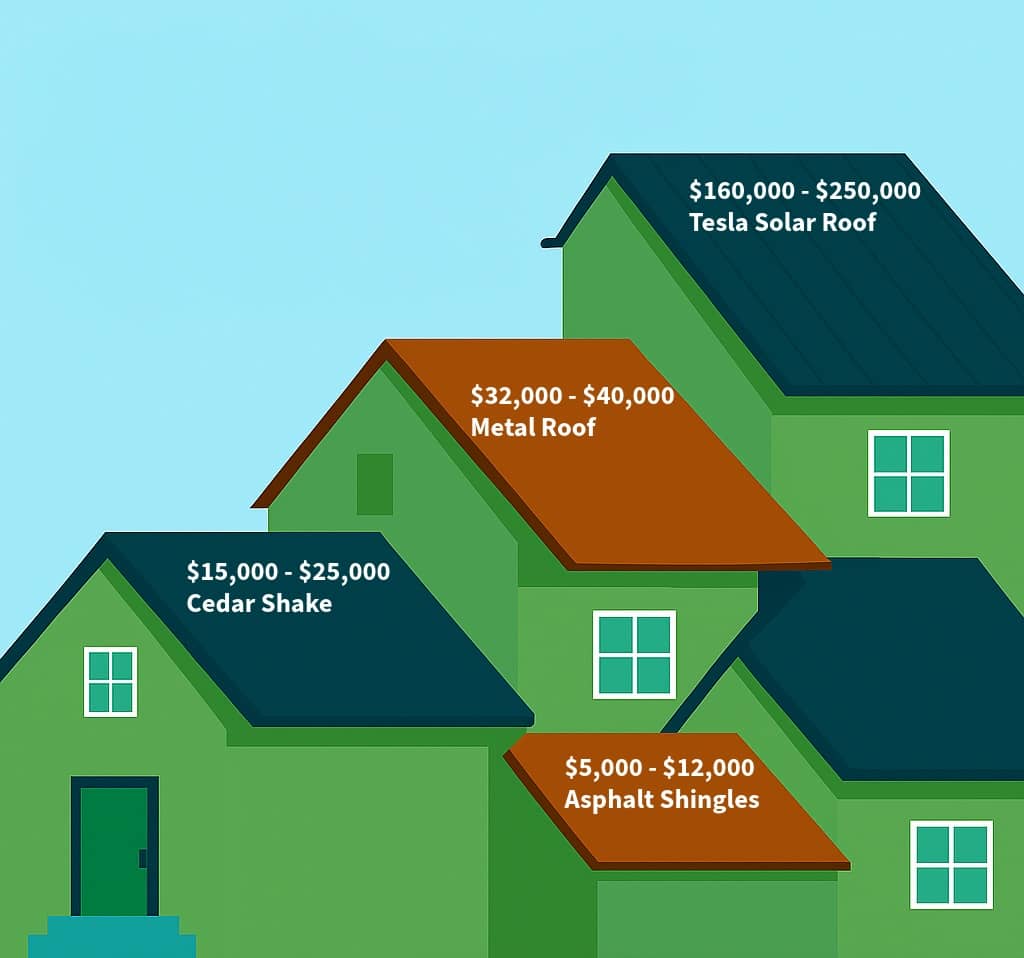
Table of contents
- Average Roof Replacement Cost by State
- Labor and Material Costs
- Regional New Roof Cost Differences: Why Your Location Matters
- Hidden and Unforeseen Costs of Roof Replacement
- Roof Warranty Coverage Explained
- Financing Your Roof Replacement: What Homeowners Need to Know
- 7 Ways to Save on the Cost to Replace a Roof
- The ROI of Roof Replacement: Is It Worth the Investment?
- Final Thoughts on Roof Replacement
Average Roof Replacement Cost by State
Here at Instant Roofer we new roof costs regularly based on thousands of contractors actively using our product. As roofers update their pricing in our system, we continuously refresh this data to reflect the most accurate roof replacement costs across every state.
The list below shows our data of the average cost to replace roofs (for asphalt shingles) across the U.S.A.
| State | Average Price | State | Average Price |
| Alabama | $15,395 | Montana | $16,784 |
| Alaska | $21,515 | Nebraska | $12,550 |
| Arizona | $17,018 | Nevada | $16,415 |
| Arkansas | $14,721 | New Hampshire | $13,108 |
| California | $17,940 | New Jersey | $11,965 |
| Colorado | $18,107 | New Mexico | $16,700 |
| Connecticut | $16,861 | New York | $15,889 |
| Delaware | $17,939 | North Carolina | $12,991 |
| Florida | $14,878 | North Dakota | $15,041 |
| Georgia | $15,185 | Ohio | $11,610 |
| Hawaii | $18,905 | Oklahoma | $18,760 |
| Idaho | $15,513 | Oregon | $18,043 |
| Illinois | $12,534 | Pennsylvania | $12,929 |
| Indiana | $15,530 | Rhode Island | $10,270 |
| Iowa | $18,808 | South Carolina | $13,884 |
| Kansas | $12,049 | South Dakota | $15,096 |
| Kentucky | $12,275 | Tennessee | $15,512 |
| Louisiana | $13,520 | Texas | $16,049 |
| Maine | $19,317 | Utah | $14,076 |
| Maryland | $13,105 | Vermont | $12,775 |
| Massachusetts | $12,948 | Virginia | $17,106 |
| Michigan | $13,040 | Washington | $16,915 |
| Minnesota | $15,748 | West Virginia | $12,470 |
| Mississippi | $15,321 | Wisconsin | $14,279 |
| Missouri | $14,327 | Wyoming | $18,827 |
Labor and Material Costs
Your roofing replacement costs can wildly vary depending on the complexity of the roof designs or even steep slopes will increase labor costs. According to Premier South, around 60% of the total cost of roof replacement will be labor.
Also consider that any repairs, and tear-off of an existing roof can also impact labor. Hiring licensed roofing contractors may charge more, but also offer warranties and better quality assurance.
Cost by Material, Size, and Durability
When planning a roof replacement, the first step is choosing the right material. Each type has its own cost and durability, so it’s important to compare your options carefully.
Roof size is another key factor. Since replacement costs are typically calculated by square footage, knowing your roof’s dimensions helps you budget more accurately. Below is a breakdown of the average cost to replace roofs by material and size.
Your roof’s lifespan depends on the material you choose, your local climate, and how well it’s installed. Comparing durability can help you choose a roofing material that offers the best long-term value.
You can find more information about this on our Roof Replacement Basics page.
| Roof Material | Average Cost Installed | Cost Per Square* | Average Lifespan |
| Asphalt Roof | $15,105 | $375 – $675 | 15 to 30 Years |
| Cedar Shake | $20,000 | $450 – $800 | 20 to 40 Years |
| Flat Roof | $28,990 | $500 – $900 | 15 to 25 Years |
| Metal Roof | $36,260 | $1,000 – $1,600 | 40 to 70 Years |
| Tesla Solar Roof | $184,429 | $2,000 – $3,500 | 30 to 40 Years |
Below is the average installed cost based on different material roof’s square footage.
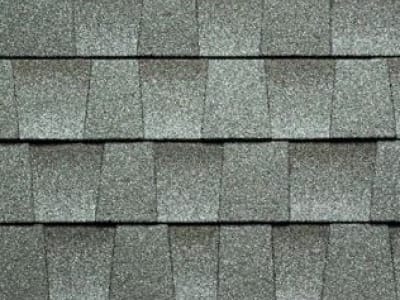
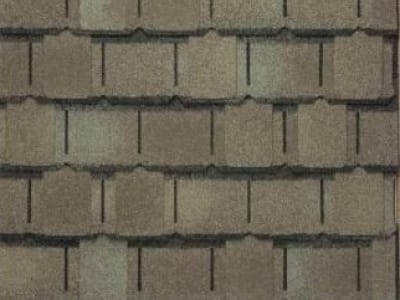
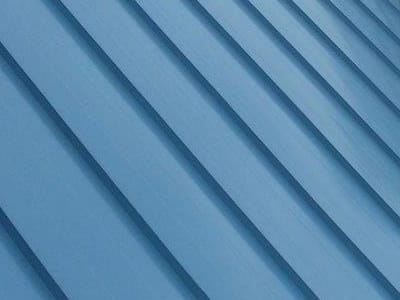
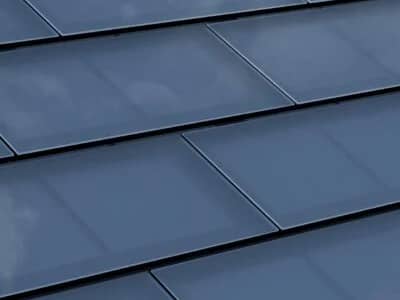
Contractor Costs
While materials matter, most of the budget goes toward skilled labor. Roofers typically charge between $40 and $90 per hour per worker, depending on location and job complexity.
Costs also increase with complex roofs, steep pitches, or multi-level homes. Tear-offs, decking repairs, and ventilation upgrades can add labor hours.
Ultimately, labor drives most of the total cost. Choosing a trusted, local contractor in your area helps ensure the job is done right and delivers long-term value.
Here are some numbers from Five Points Roofing Company on the cost of additional things to consider:
Removal and disposal of old roof:
$1 to $5 per square foot, depending on complexity and amount of debris.
New underlayment:
$0.50 to $2 per square foot, this is an essential layer that protects your home from moisture.
New flashing:
$500 to $2,000, depending on the amount of flashing required.
Repair or replacement of damaged wood:
$500 to $2,000, if a repair to the structure is required before roof replacement.
Permits and inspections:
$500 to $2,000 of additional cost for necessary compliance with local building codes and laws.
Roof Pitch Impact on Cost
Roof pitch impacts replacement cost because steeper slopes require more materials and labor. A higher pitch increases surface area, driving up material use and waste. It also demands extra safety gear, skilled labor, and time, all of which raise costs.
We find that homes with steeper roof pitches often cost significantly more to replace than those with flatter roofs. This is because high-pitch roofs typically require additional labor, safety measures, and specialized equipment to complete the job efficiently.
You can learn more about roof pitch here on our Roof Pitch Calculator page.
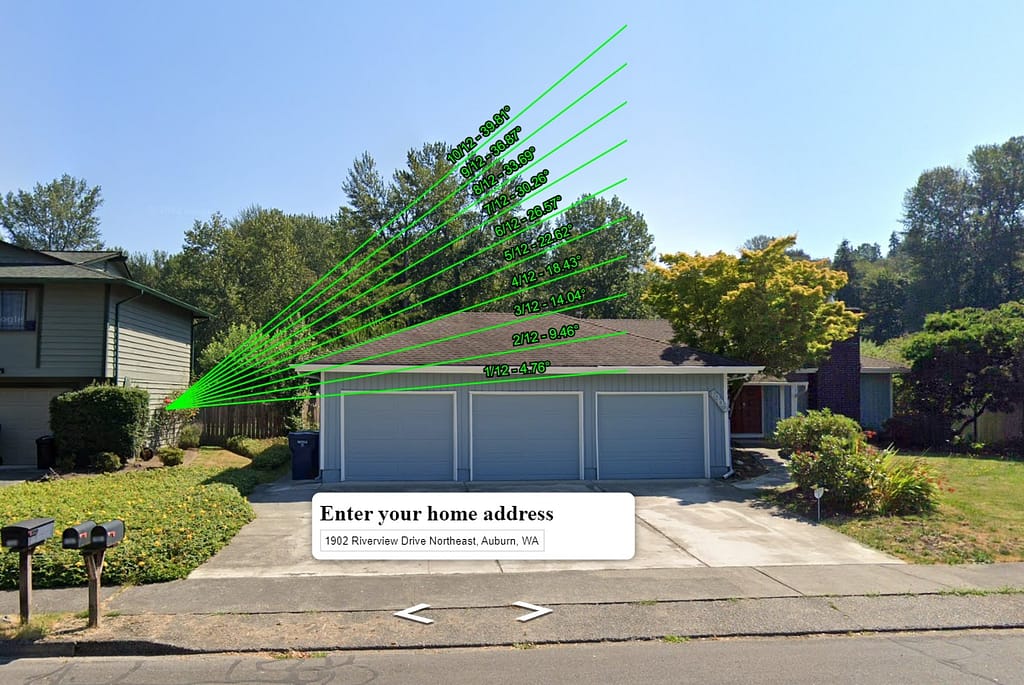
Additional New Roof Costs
When replacing your roof, there are several essential materials and services beyond the shingles that contribute to a durable and code-compliant installation. These added components help protect your home, improve energy efficiency, and prevent costly issues down the line.
Individually these items do not cost much by themselves, but their combined cost can significantly impact your total project budget. Looking into some standard roof replacement cost overview, here are some common additional items that will factor into the total cost of your roof replacement.
| Item | Average Cost Range |
| Nails & Fasteners | $100 – $300 |
| Underlayment | $500 – $1,000 |
| Ice & Water Barrier | $400 – $900 |
| Starter Shingles | $100 – $300 |
| Ventilation | $300 – $700 |
| Flashing | $200 – $600 |
| Drip Edge | $150 – $400 |
| Debris Removal & Disposal | $500 – $1,500 |
| Permits & Inspections | $150 – $500 |
Factoring in these additional costs helps ensure a smoother, longer-lasting roof replacement.
Regional New Roof Cost Differences: Why Your Location Matters
Homeowners often want to know how much to replace a roof and one of the biggest factors to consider is the location of your home. While roofing material prices are relatively consistent nationwide, labor rates, permitting requirements, and local building codes can vary dramatically between states and even between cities.
If you’re comparing quotes or budgeting for your project, it’s important to understand how geography can affect the overall cost.
Below you’ll find our graph on average asphalt shingle roof replacement cost by state.
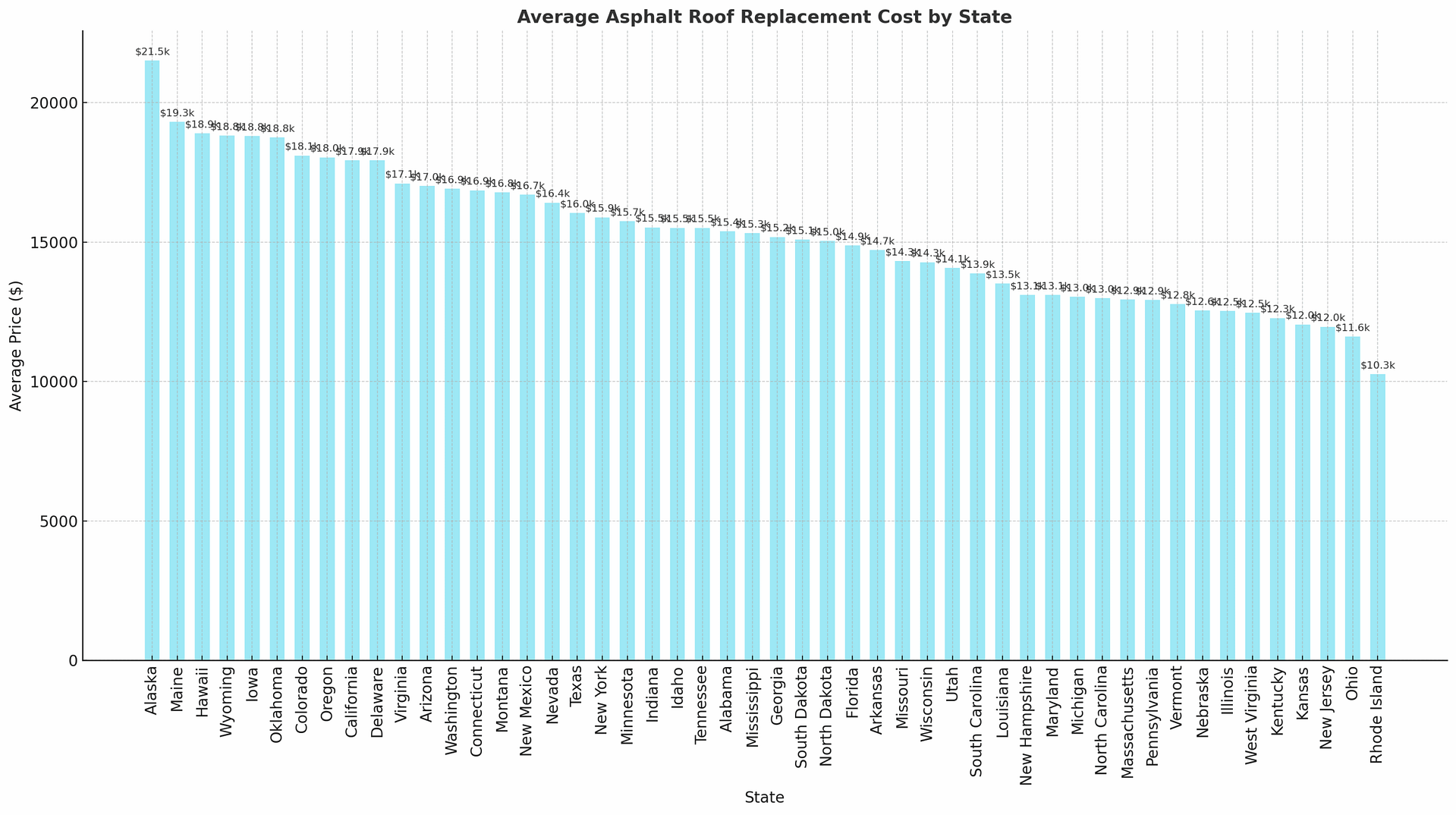
Why Roofing Costs Vary by Region
Ever wonder why a roof costs more in one state than another? Regional differences in labor availability, local building codes, and access to materials all play a role in determining your final roof replacement cost.
Labor Availability:
In areas with a high demand for construction work and a limited skilled roofers, labor costs rise. For example, urban centers and coastal regions often have higher labor rates than rural areas.
Local Building Codes:
Some states have stricter codes due to weather risks like hurricanes, snow loads, or wildfires. Meeting these standards often requires additional materials, reinforcements, or inspections.
Material Accessibility:
Regions that are farther from distribution hubs or manufacturing centers may see higher prices due to transportation costs and limited supply chains.
What This Means for Homeowners
If you’re seeing higher-than-average quotes, your location may be the reason, not just the material or roof size. It’s always a good idea to get multiple local estimates and make sure your quote includes everything from labor and materials to permits and code upgrades.
Hidden and Unforeseen Costs of Roof Replacement
Even with a detailed roofing estimate in hand, unexpected issues can still arise once your old roof is removed. These hidden or unforeseen costs can significantly impact your total budget, especially if your home has underlying damage that wasn’t visible during the initial inspection.
Here are some surprises that often come up during inspection for roof replacement.
| Item | Estimate cost range | Description |
| Rotting Deck | $1,000 – $2,500 | Replacing damaged or weakened wood sheathing |
| Mold Remediation | $500 – $5,000+ | Cleaning up mold caused by leaks or poor ventilation |
| Pest Damage Repairs | $300 – $2,000 | Repairs due to rodents, termites, or insect damage |
| Code Upgrades | $500 – $3,000+ | Upgrades to meet current building codes |
You can also check out our blog on the hidden costs of roof replacement that many homeowners miss.
Roof Warranty Coverage Explained
When replacing your roof, it’s important to understand what kind of warranty coverage you’re getting. A roof is a major investment, and having the right warranty can protect you from unexpected costs due to material defects or installation errors.
Types of warranties
A reliable roof warranty should include both material and workmanship coverage. Homeowners need to understand what the manufacturer warranty covers, how it changes over time, and what protection the contractor’s workmanship warranty offers.
Below is a breakdown of the two main types of warranties to consider when replacing your roof.
Manufacturer Warranty: This type of warranty is provided by the company that makes the roofing materials, such as asphalt shingles or underlayment. A manufacturer warranty typically covers defects in the roofing materials, meaning if your shingles crack, blister, or fail prematurely because of a manufacturing issue, the manufacturer will supply replacement materials.
However, these warranties often do not cover labor, tear-off, or disposal costs unless you choose an upgraded or extended version.
Manufacturer warranties are often marketed as “lifetime,” but they usually offer full coverage for a limited time (such as 10 or 15 years). After that initial period, the coverage becomes prorated, meaning the compensation you receive decreases as your roof gets older.
Workmanship Warranty: Offered by the roofing contractor, a workmanship warranty covers errors made during the installation process. Even high-quality shingles can fail if they’re not installed properly, which is why this warranty is so important.
If a roof leak or structural issue is traced back to poor installation, a workmanship warranty ensures the contractor is responsible for repairs instead of the homeowner.
Coverage length varies by contractor and can range from a few years to 10, 15, or even lifetime coverage, depending on the company. Some roofing contractors may only offer limited warranties, while others provide more comprehensive, long-term guarantees.
Financing Your Roof Replacement: What Homeowners Need to Know
Replacing your roof is a major investment, and with costs ranging from several thousand to tens of thousands, financing can help make it more manageable. Whether it’s due to storm damage or an energy upgrade, here are some of the most common roof financing options and factors that may affect your financing eligibility.
Common Roof Financing Options
Depending on your financial situation and credit profile, here are some of the most popular ways to finance a roof replacement:
| Financing Option | Typical Term Length | APR Range | Notes |
| Home Equity Loan | 5 – 30 Years | 5.0% – 8.5% | Fixed rate, good for larger projects; requires sufficient home equity. |
| HELOC (Home Equity Line) | 5 – 20 Years (10 – Year draw) | 6.0% – 10.5% (Variable rate) | Flexible access to funds; rates fluctuate. |
| Personal Loan | 1 – 10 Years | 6.5% – 20% | Quick approval, no collateral, high rates. |
| Roofing Company Financing | 1 – 15 Years | 0% – 15% | May offer promo rates like 0% APR for 6-24 months. |
| Credit Card | Revolving | 0% – 29.99% | Ideal for short-term use with promo rates; high APR if unpaid. |
Factors That Affect Your Financial Eligibility
Several factors play a role in determining whether you qualify for financing and what terms you’ll receive:
Credit Score:
Most lenders require a score of 640 or higher for competitive rates. The better your credit, the more financing options you’ll have. Having a credit score of 700 or higher typically results in better terms and interest rates.
Loan-to-Value Ratio:
A lower LTV (meaning you owe less relative to your home’s value) improves your chances of approval and better interest rates. A good LTV ratio for roof replacement is typically 80% or lower.
Regional vs National Programs:
Some states offer incentives, rebates, or grants for energy-efficient roofing projects, especially if you’re installing reflective shingles or integrating solar panels. Be sure to check local programs that may reduce your out-of-pocket cost. According to the IRS, making qualified energy-efficient improvements to your home can net you up to $3,200 in tax credit per year.
7 Ways to Save on the Cost to Replace a Roof
Roof replacement is a significant investment, but there are several strategies to help you save on the overall cost while ensuring a quality outcome. Here are seven ways to reduce your roof replacement expenses.
Request Quotes From Multiple Roofers:
Don’t settle for the first quote you receive! Reach out to multiple reputable roofing contractors in your area. Obtaining multiple quotes allows you to compare pricing, workmanship guarantees, and materials used.
If you need reliable contractors, check out our Find a Roofer page! It’s a valuable step in finding the right balance between quality and affordability.
Schedule Off-Peak Hours:
Roofing contractors are typically busier during peak seasons, such as late spring and early summer. Consider scheduling your roof replacement during the off-peak seasons (late fall or winter, depending on your climate). Contractors may be more willing to negotiate on labor costs during these times, leading to cost savings.
Choose a Lower Cost Roof Material:
While you want a roof that’s both durable and visually appealing, there are cost-effective roofing materials available. Asphalt shingles, for instance, provide a balance between affordability and performance.
Research the pros and cons of different materials to make an informed choice that suits your budget. Take into account any agreements like HOA rules about type and color of roofing material so you don’t accidentally end up paying twice trying to save a buck!
Consider a Roof-Over:
If your local building codes allow it and your existing roof is in reasonably good condition, you can save on labor and disposal costs by opting for a roof-over. This approach involves installing a new layer of roofing over the old one.
However, it’s essential to consult a professional to ensure this is a viable option, as it may not be suitable for roofs with extensive damage or structural issues.
Perform Regular Maintenance:
Regular roof maintenance can help you catch and address issues early, prolonging the life of your roof. Invest in periodic inspections and maintenance, addressing minor problems before they escalate into costly repairs or replacements. This proactive approach can save you money in the long run.
Roof Financing Options:
Explore financing options for your roof replacement and check out our roof financing calculator. Many roofing companies offer financing plans with low-interest rates, allowing you to spread your roof replacement costs over a longer period.
Additionally, check if there are any roofing grants or subsidies available in your area. These financial incentives can help alleviate the immediate financial burden of roof replacement.
Energy-Efficient Roofing:
Consider investing in energy-efficient roofing materials. While these materials may have a higher upfront cost, they can significantly reduce your long-term energy bills by providing better insulation and heat reflection. Over time, the energy savings can offset the initial investment, making it a cost-effective choice.
By combining these strategies, you can make informed decisions that not only save on roof replacement costs but also ensure that you get a durable, attractive, and energy-efficient roof for your home.
The ROI of Roof Replacement: Is It Worth the Investment?
Yes! replacing your roof can significantly increase your home’s value, especially if you’re planning to sell in the near future. A new asphalt shingle roof can often recoup a large portion of its cost through added resale value.
Below shows average house appreciation when replacing their roof.
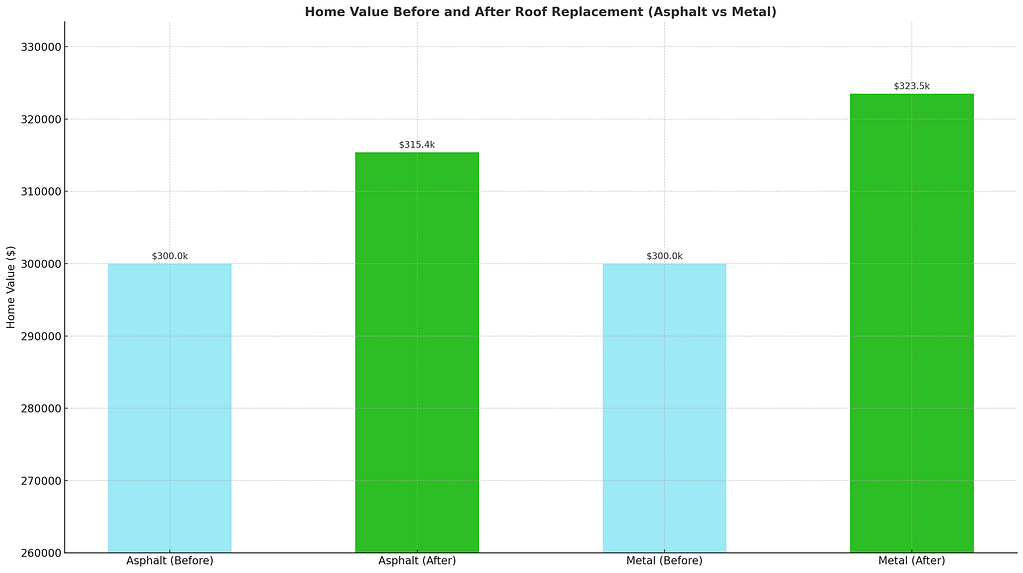
In competitive housing markets, it may also help your home sell faster and appeal to buyers looking for move-in-ready properties.
Why Roof Replacement Makes a Difference
While asphalt shingles are the most common choice, premium materials such as metal, tile, or architectural shingles can offer even higher returns. These materials often come with extended warranties, improved durability, and enhanced curb appeal, which can raise your home’s perceived and appraised value.
Even when the upfront cost of a premium roof is higher, it often delivers a stronger return on investment. Homeowners can expect increased property value, reduced maintenance expenses, and potential savings on energy bills and insurance premiums.
In many cases, a premium roof can boost resale value by $15,000 to $30,000, depending on the material and region.
Final Thoughts on Roof Replacement
Replacing your roof is a major investment, but with the right tools and information, it doesn’t have to be overwhelming. By understanding average costs, materials, labor, and add-on expenses, you can plan more accurately and avoid surprises.
Use Instant Roofer to get a real-time roof estimate based on your home’s size and location. No guesswork, no hassle. Whether you’re budgeting or ready to hire a contractor, we make it easy to move forward with confidence.
We understand that a new roof is a substantial investment, with the average price of a new asphalt roof in the U.S. being . (Determined by our roofing calculator ) To make this investment as stress-free as possible, we work with contractors who provide clear, detailed pricing per square foot. We can thereby identify the best-suited contractor for your needs and budget, taking into account your unique requirements and circumstances.
Your trust matters to us. We aim to provide transparency in all our processes, including pricing. Our contractors regularly update their pricing, taking into account factors like location, disposal costs, and roof type.
With Instant Roofer, you have access to the most accurate, up-to-date roofing costs nationwide, allowing you to plan, budget, and invest wisely.
